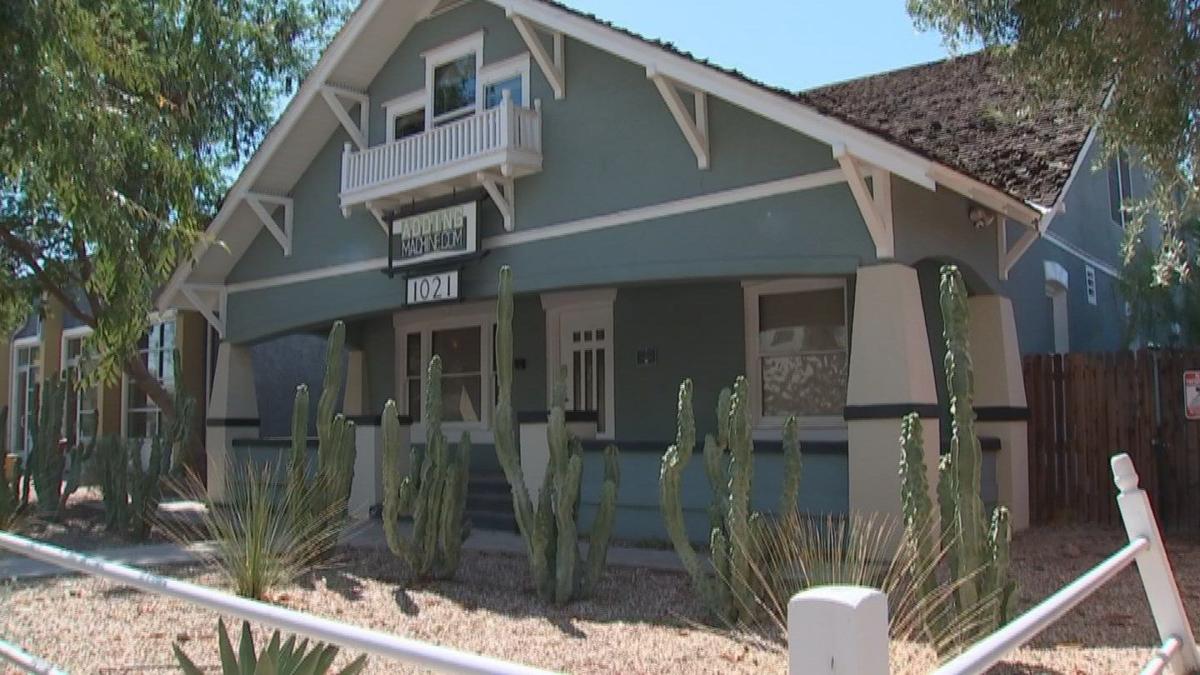Table of Contents
The Swindall Tourist Inn, one of the few hotels back in the days that allowed black travelers to stay overnight.
You may realize that this article has a different format than our usual posts. Trust us, there are good reasons for that. When we went through our archives, we noticed we’ve never talked about black history in Phoenix alone.
Therefore, before we write about the black-owned businesses, the fantastic black talents, and the cultural landmarks in and near Phoenix, we wanted to first talk about history. Because only by understanding our past can we move forward together as a stronger community.
Won’t you agree?
A Glimpse into Arizona’s Black History
When we look into Arizona’s black history, we don’t always see progress and development. Back around the 1930s, segregation in Arizona was at its peak. Many places were inaccessible to all minorities, others to black people only. At some point, the living conditions were so dangerous that a survival guide called The Green Book began circulating. This guidebook listed places black people could safely visit.
In the meantime, black workers played a significant role in propelling Arizona’s economic development forward. Between the 1950s and 1960s, most cotton pickers in Arizona were black, enduring agonizing long-shifts every day, being the driving force behind the local economy.
Ultimately, the silence of black contribution played into the larger picture that erased African American contributions to Phoenix and Arizona’s development. And like we always say, there are two ways of learning about black history in Phoenix:
You can read about it, or you can hear it from those who lived it.
Discover Black Lives in Phoenix
That’s why we want to take you a little deeper into the black communities in and near Phoenix. Because how can we genuinely support black community growth without understanding their culture, heritage, and lifestyle?
According to the US Census Bureau, the black population only accounts for 7% of the Maricopa County population. Therefore, you won’t be able to find a “black neighborhood” as you might in many other metro areas across the state.
However, there are areas where you can get a glimpse of the black lives in Phoenix. Some of these areas are:
- South Phoenix: South Phoenix is where most black population resided throughout history until they relocated to other places for more opportunities. Today, South Phoenix is famous for its lower living costs and diverse neighborhoods.
- Central Phoenix: Central Phoenix can be intimidating due to the high living costs. However, it is also tempting to the younger generation, especially the entrepreneurs, because of its development. Seriously, you can find anything you need, whether it’s business opportunities or cool hangout spots in Central Phoenix.
- Tempe: As somewhat of a college town, Tempe is the center for ASU students and their families. However, Tempe’s vibrant, artistic scene has attracted a more diverse population in the past few years.
Celebrating Black History this Year
The Covid-19 pandemic made so many things different. As we continue to observe the pandemic and practice social distancing, organizations have found new ways to keep residents in the Valley engaged throughout this unusual time.
That’s why we are so happy to tell you that many classic events for Black History Month are still on the calendar, either virtually or with a limited capacity.
Some featured activities include
- The Phoenix Black History Month Mural project
- African Americans in the Arts exhibition presented by West Valley Arts
- Digital performance of “Cowboy” brought to us by ASU
- Open mic poetry night at Club DwnTwn in Phoenix
Are you looking for more Black History Month events? Stay tuned for our updates in the next few weeks on our website and social media!
Support Black-Owned Businesses in Phoenix
Did we mention we are putting together a new list of growing black-owned businesses this month? No? Well, now you know!
While you excitedly wait for that list to come out, why not take a look at some past features we’ve done?
- 15 Black-Owned Hair Salons Where You Can Get a Fresh Look Near Phoenix
- 10 Black-Owned Boutiques Near Phoenix Where You Can Shop Next Season’s Wardrobe
- 8 Black-Owned Bars Where You Can Grab a Cold One Near Phoenix
- 14 Black-Owned Restaurants Serving Up Delicious Grub Near Phoenix
Black History is Now
Like we said from the beginning, black history is an ongoing development. Every day we contribute to the timeline, and it’s up to us to create a history on which our children will proudly look back.
So repeat after us: let’s honor, celebrate, and create black stories in and near Phoenix. Let us remember the past, celebrate our progress, and continue to create new milestones,
Aren’t you excited to see what we can build together one, five, or ten years from now?




